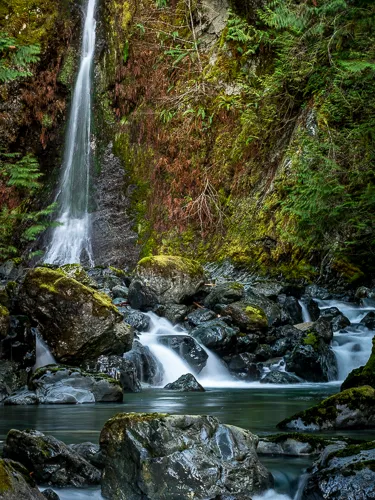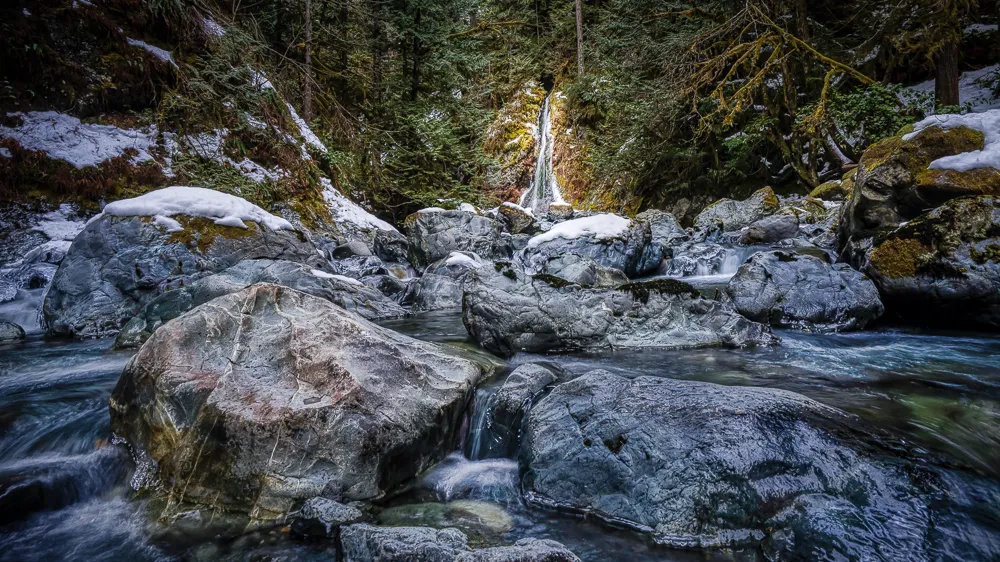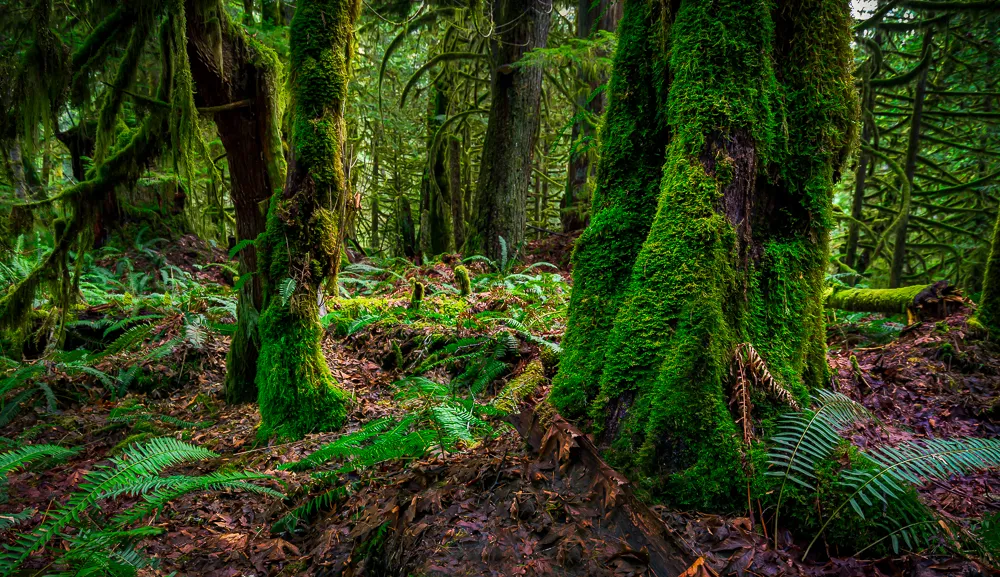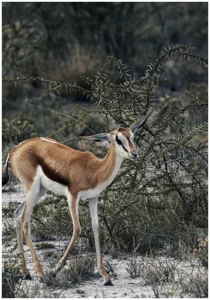
Photography as a Hobby for Beginners: Unlock Your Artistic Vision
Photography can be a fulfilling and enjoyable hobby that brings a creative outlet to your


Today, we are heading out to Rosewall Creek Falls with camera in tow. Rosewall creek is an easy hike that takes between 30 and 45 minutes, depending on your pace. It’s a nice walk through the lush rain forest with lots of photo opportunities.
Rosewall Creek Falls is located south of Fanny Bay on central Vancouver Island. The park has several trails that are wheelchair accessible.
Within the park is a day-use area and short trails run along both sides of the creek. Fall is my favourite time of the year to visit, as the leaves of the large maple trees turn into their glorious autumn colours.

The best place to park when photographing Rosewall Creek Falls is in the small day-use area near the falls. Plus, there are picnic tables in the day-use area where you can enjoy lunch or a quick snack.
I love going to Rosewall Creek Falls for photography in the fall when the leaves have changed colour. The park is open from 9am-5pm from September to November, and 9am-4pm from December to March.
Rosewall Creek Falls is a beautiful spot to take photos, but it’s important to be cautious when hiking around the falls. If you are taking pictures of the falls, be aware of the slippery rocks. The trail can be muddy in places, but otherwise it’s in good condition.
Pit toilets are available, and they are wheelchair accessible. Both pit toilets are in the parking lot area.
Pets and domestic animals are permitted in the park and must always be on a leash. You are in charge of their behaviour and must get rid of their waste.
Rosewall Creek Falls is located south of Fanny Bay on central Vancouver Island. Very easy to get to by following the signs on the inland Island highway.
In the winter, the falls are a popular bird-watching spot. The trail is accessible year-round, but may be difficult in the winter after a snowfall.
The best time to visit Rosewall Creek Falls is in the fall when the leaves change colour. The park website contains directions to the falls.
There are a few different things to consider when deciding what lenses to use when photographing the falls. First, think about what kind of photos you want to capture. If you’re looking for close-ups of the waterfalls, a telephoto lens will be your best bet. For more general shots of the area, a wide-angle lens will give you a better view. Second, keep in mind that the trail to the falls can be muddy and slippery. Finally, be aware that the falls are in a remote area and there is potential for encountering wildlife, so it’s always best to be prepared.
In order to get the best results when photographing Rosewall Creek waterfall, it is important to follow a few key steps. First, check the local weather conditions for the day you plan to photograph the falls. Second, hike to the waterfall and take pictures from different vantage points. Third, be sure to bring proper clothing and footwear for the weather conditions. Fourth, exercise caution when photographing waterfalls and pay attention to water levels. By following these steps, you will be able to get the best possible results when photographing waterfalls.
The best time to photograph the falls is during the winter and spring months when the water levels are higher. This makes it harder to access the falls and get different angles for your shots. More-over the falls will be more amazing.
Waterfalls are best photographed on cloudy days because the light is softer and more even, making for great shots. The mist created by the waterfall also adds to the overall effect and makes for beautiful photographs. The trail leading up to the waterfall is also visually appealing and worth taking a look at.
I prefer to photograph the falls in the early morning or late afternoon. When the light is at its best. The trailhead is in a second-growth forest with many types of trees. The environment is rich with lichen, moss, fungus, and mushrooms, which add to the beauty of the falls.
The best vantage point to photograph the falls will vary depending on your ability to hike up steep hills.
The first waterfall is the easiest to photograph, but the views aren’t as predominant The second waterfall has better photo opportunities if you are a little more adventurous.
During the summer months, low water levels give you ample opportunities to explore the rocks in the river and the smaller waterfall dropping into the small pools.
If you are taking pictures of waterfalls, it is best to use a tripod. This will help to avoid camera shake and give you a stable image. I can’t stress this enough: A tripod can help you take better photos by keeping the camera steady. Especially when shooting longer exposures.
A slow shutter speed will help capture the movement of waterfalls. This is because a slow shutter speed means the camera’s shutter stays open for longer, allowing more light to enter the camera. This allows for a greater range of motion to be captured, which is perfect for photographing waterfalls. To use a slow shutter speed, set your camera to a low ISO and use a tripod to keep the camera steady.
In order to use long exposures to capture the falls, you must be on a tripod and use a remote shutter release. You will need to experiment with different shutter speeds to get the desired effect. A long exposure will make the water look silky smooth. Too long and the exposure turns out Milky-white.
Polarizing filters improve waterfall photography by reducing glare from the water and surrounding rocks. Plus, it increases the colour saturation. When choosing a polarizing filter, it is important to consider the angle of the sun in relation to the waterfall. For best results, shoot when the sun is at a 90-degree angle to the waterfall.
When taking waterfall photos, it is important to find a composition that fits your vision. I prefer to photograph Rosewall Creek in the fall when the leaves change colour. Experiment with different angles and compositions to find the one that looks suits you.
A wide-angle lens will allow you to capture the entire waterfall. By positioning yourself close to the falls, you can use the wide field of view to your advantage. Look for interesting leading lines in your shots, as the river will be placed closer to the camera.
While you’re at Rosewall Creek, try using your telephoto lens. This will allow you to capture intricate details without getting too close. Higher-end telephoto lenses have a wider aperture opening that allows more light in, which is perfect for taking pictures of falls. Don’t forget to use the tripod to avoid camera shake.
Rosewall Creek Falls is just one of the many waterfalls on Vancouver Island that are worth photographing. It is especially if you enjoy hiking and being in nature. The falls are located on Vancouver Island, and the trail to get there is easy but long. However, the hike is well worth it for the amazing views of the waterfall. There is also a lower viewpoint that provides an even better view of the falls.
If you’re looking for more waterfall photography locations, be sure to check out our other guides. Thanks for reading!

Photography can be a fulfilling and enjoyable hobby that brings a creative outlet to your

Welcome to our guide to Photoshop tutorials for beginners: A Complete Beginner’s Tutorial for Learning

Creating stunning images is all about nailing the perfect colour grade. It’s what makes your